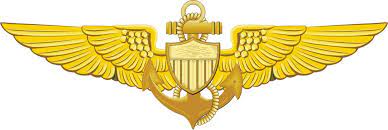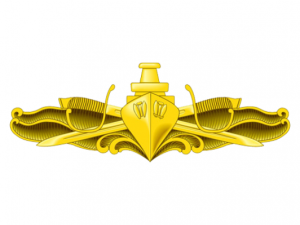
Commissioning
Upon completion of the Naval ROTC program, you will be commissioned as either an Ensign in the United States Navy or a 2nd Lieutenant in the United States Marine Corps. Below are the most common communities you can pursue as one of the newest commissioned officers in the United States Naval service.
AVIATION – NAVAL AVIATOR

- All newly commissioned Ensigns and 2nd Lieutenants entering the Aviation Pipeline report to Naval Air Station Pensacola for Navy and Marine Introductory Flight Training Naval Aviation Schools Command (NASC) while enrolled in the Aviation Training School’s Naval Introductory Flight Evaluation (NIFE) program. NIFE by design establishes the foundations of aviation fundamentals for aspiring aviators but is also a screening tool that will test student’s ability to handle stressful evolutions in a high impact environment.
- Following NIFE, prospective aviators report to Primary Flight training, either at NAS Whiting, FL or NAS Corpus Christi, TX for 22 weeks.
- Following Primary flight training, Pilots select either jet or propeller driven aircraft and progress to flight training’s Intermediate phase. This phase builds upon basic flight training learned in primary; Pilots select what fleet mission type they will fly for when they complete this phase.
- Advanced Naval flight training is mission-specific to the fleet type Pilots have selected. Upon completion of Advanced flight training, Pilots are awarded their coveted wings of gold and report to their respective Fleet Replacement Squadrons (FRS) for specific aircraft training. The FRS will teach newly winged aviators how to fly their aircraft type in all the various missions; concludes with carrier qualifications. FRS graduates are now official ‘fleet aviators’ and will report to an operational fleet squadron.
AVIATION – NAVAL FLIGHT OFFICER

- All newly commissioned Ensigns and 2nd Lieutenants entering the Aviation Pipeline report to Naval Air Station Pensacola for Navy and Marine Introductory Flight Training Naval Aviation Schools Command (NASC) while enrolled in the Aviation Training School’s Naval Introductory Flight Evaluation (NIFE) program. NIFE by design establishes the foundations of aviation fundamentals for aspiring aviators but is also a screening tool that will test student’s ability to handle stressful evolutions in a high impact environment.
- Following NIFE, prospective aviators report to Primary Flight training, either at NAS Whiting, FL or NAS Corpus Christi, TX for 22 weeks.
- Following Primary Flight Training, NFOs select either jet or propeller driven aircraft and progress to the flight training’s Intermediate phase. This phase builds upon basic flight training learned in primary; NFOs then select their fleet aircraft type for when they complete this phase.
- Advanced Naval flight training is mission-specific to the fleet type Pilots have selected. Upon completion of Advanced flight training, Pilots are awarded their coveted wings of gold and report to their respective Fleet Replacement Squadrons (FRS) for specific aircraft training. The FRS will teach newly winged aviators how to fly their aircraft type in all the various missions; concludes with carrier qualifications. FRS graduates are now official ‘fleet aviators’ and will report to an operational fleet squadron.
SURFACE WARFARE

- The US Naval fleet is comprised of unique platforms, from the largest and most powerful Aircraft Carriers in the world, to some of the most advanced warships, transport ships, and amphibious platforms. These warships are stationed all around the country and the globe, with Naval Bases in VA, CA, FL, WA, and further abroad in Spain, Bahrain, and Japan.
- A prospective Surface Warfare Officer (SWO) begins their career after commissioning by attending the Navy’s Basic Division Officer Course. Here they will develop their navigation, seamanship, and shipboard systems knowledge to prepare for shipboard qualifications and responsibilities. Following completion of this course, these junior officers depart straight to the fleet and their selected ships for their first sea tour. They are assigned as Division Officers to one of the many divisions responsible for the tactical employment, maintenance, and repair of shipboard systems, serving with and leading highly skilled Sailors. Simultaneously, they will begin standing watch, developing their skills and technical knowledge in shipboard operations and tactics, and work towards their pinnacle qualifications of Officer of the Deck and Surface Warfare Officer.
- After completion of a nominal 24-32 month first sea tour, SWOs will depart for the Advanced Division Officer Course in preparation for their second tour. Here they will undergo a rigorous training curriculum beginning with a first phase focused on expanding watch standing skills developed in their first tour. The second phase of training is job specific, focusing on equipping SWOs with the necessary skills to operate advanced warfare systems in a specific warfare area such as anti-air warfare or anti-submarine warfare. Examples of second tour billets are: Fire Control Officer, Anti-Submarine Warfare Officer, Engineering Officers, and Navigation Officer. The second tour offers SWOs an opportunity to serve on a different ship and weapons platform, and to further develop tactical skills and qualifications.
- Following completion of a second tour, the SWO will rotate to shore duty (NROTC, training command, US Naval Academy, Instructor Duty, Staff Position, or the Naval Post-graduate School).
NUCLEAR SURFACE WARFARE
- The Nuclear Surface Warfare Officers (SWO(N)s) are a smaller community within the SWO community. These SWO(N)s develop a sub-specialty in the operation of naval nuclear power plants aboard aircraft carriers. SWO(N)s begin their careers with the same training and first tour requirements as conventional SWOs. After earning their SWO qualification, they depart for Charleston, SC to attend Naval Nuclear Power Training Command (NNPTC), vice Advanced Division Officer Course which non-nuclear SWOs attend.
- At NNPTC, prospective Nukes undergo a challenging, year-long, training program. The first of two phases consist of classroom based training where students learn the basics of nuclear power and power plant operations. The curriculum includes courses in heat transfer, chemistry, electrical engineering, and reactor plant systems. The second phase focuses on translating that fundamental knowledge into operational skill. Here students will get hands-on experience standing watch and operating nuclear power plants at one of the Navy’s moored training submarines in the Cooper River of Charleston.
- After graduation from NNPTC, SWO(N)s depart for their second tour aboard a nuclear powered aircraft carrier. Similar to their first tour, they are assigned to a division in the Reactor Department and are responsible for leading nuclear trained sailors in the operation and maintenance of nuclear power plants. They will qualify as Propulsion Plant Watch Officers and continue studying and preparing for their pinnacle Naval Nuclear Engineer qualification at Naval Reactors.
SUBMARINES

- The Navy’s Submarine Service is the tip of the spear in respect to US military might and sea power. Commonly referred to as the “Silent Service”, submarines fulfill a variety of strategic missions including: Intelligence, Surveillance, and Recoinicance (ISR), anti-submarine warfare, anti-surface warfare, Tomahawk strike, and nuclear deterrence. Officers and Sailors in the submarine community are members of close knit and highly trained crews responsible for operating the most advanced submarines in the world. There are a variety of submarine platforms to achieve these diverse mission sets: Fleet Ballistic Missile Submarines (SSBN), Fast Attack Submarines (SSN), and Guided Missile Submarines (SSGN). These submarines are home ported around the country in CA, CT, GA, HI, WA, VA, and abroad in Guam. Prospective Submariners begin their careers at Naval Nuclear Power Training Command (NNPTC) in Charleston, SC.
- NNPTC is an accelerated graduate level training in mathematics, thermodynamics, chemistry, physics, electrical engineering, material sciences, reactor dynamics and nuclear plant operations. The two phase year long training program is designed to provide newly commissioned officers with the foundational knowledge required for safe operation of naval nuclear reactors, regardless of whether their undergraduate degree is in an engineering or a liberal arts discipline.
- The first phase of training consists of six months of classroom based fundamentals while the second six months, known simply as ‘prototype’, focuses on translating that foundational into operational skills. At prototype, students will get hands-on experience supervising nuclear watch teams while operating a nuclear power plant on one of the Navy’s permanently moored training submarines. To demonstrate their understanding of the systems students operate on, they must earn qualifications which include demonstrations of knowledge on written exams, oral boards, and watch standing under routine and casualty scenarios. Completion of prototype comes with a Nuclear Operator certification from the United States Department of Energy.
- Following training at NNPTC, submarine officers attend a 12-week Submarine Officer Basic Course (SOBC) in Groton, CT. At SOBC, students receive comprehensive training on basic submarine systems, including weapons, navigation, fire control, and auxiliary systems. Students also learn and practice submarine operations and tactics, with courses in undersea contact tracking, undersea navigation, mining and special missions.
- The end of SOBC marks almost one and a half years of intense training, and officers depart for their first submarine assignment. They are assigned as Division Officers to one of the many divisions responsible for the tactical employment, maintenance, and repair of shipboard systems, serving with and leading highly skilled Sailors. Simultaneously, they will begin standing watch in the engineering plant, developing their skills and technical knowledge of the ship’s propulsion and electrical systems. Following qualifications in the engineering plant, officers transition to the weapons and navigation watchstations, where they develop their skills in navigation, weapon systems, tactics, integrated plant operations. The pinnacle qualifications for a submarine officer’s first tour are Officer of the Deck and Submarine Warfare Officer.
MARINE CORPS

- Typically, the summer before senior year at UIUC, students must attend and pass a 6-week training program, Officer Candidates School.
- All commissioned Marine Corps officers report to The Basic School (TBS) in Quantico, Virginia. TBS is a 6-month program, where appointed officers are no longer screened, but trained to be competent leaders our Corps and country count on. Officers are educated with high standards of professional knowledge, esprit-de-corps, and leadership to prepare them for duty; courses are distributed into three categories: Leadership, Academics, and Military Skills.
- Once marines receive their Military Occupation Specialty (MOS), which is decided based on class rank at TBS. From here, newly commissioned officers are sent to domestic locations dependent on their assigned MOS.